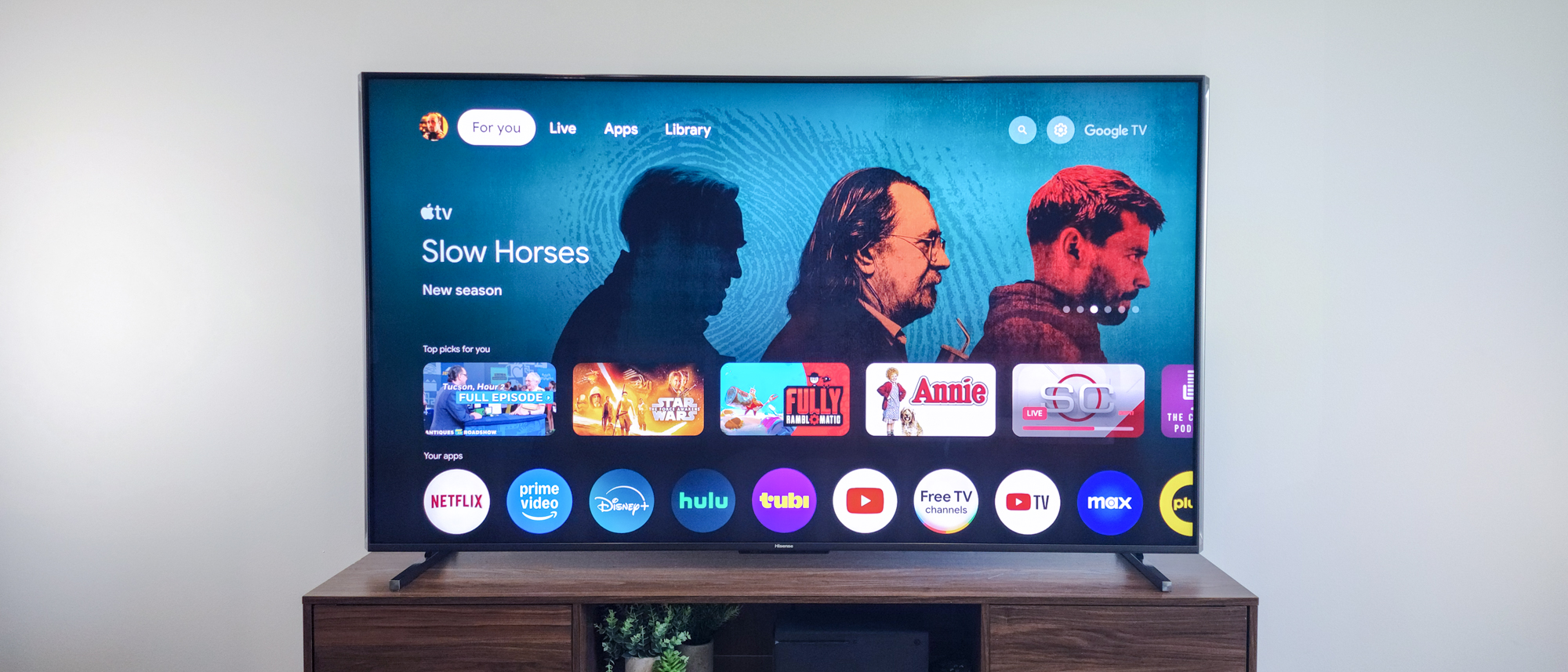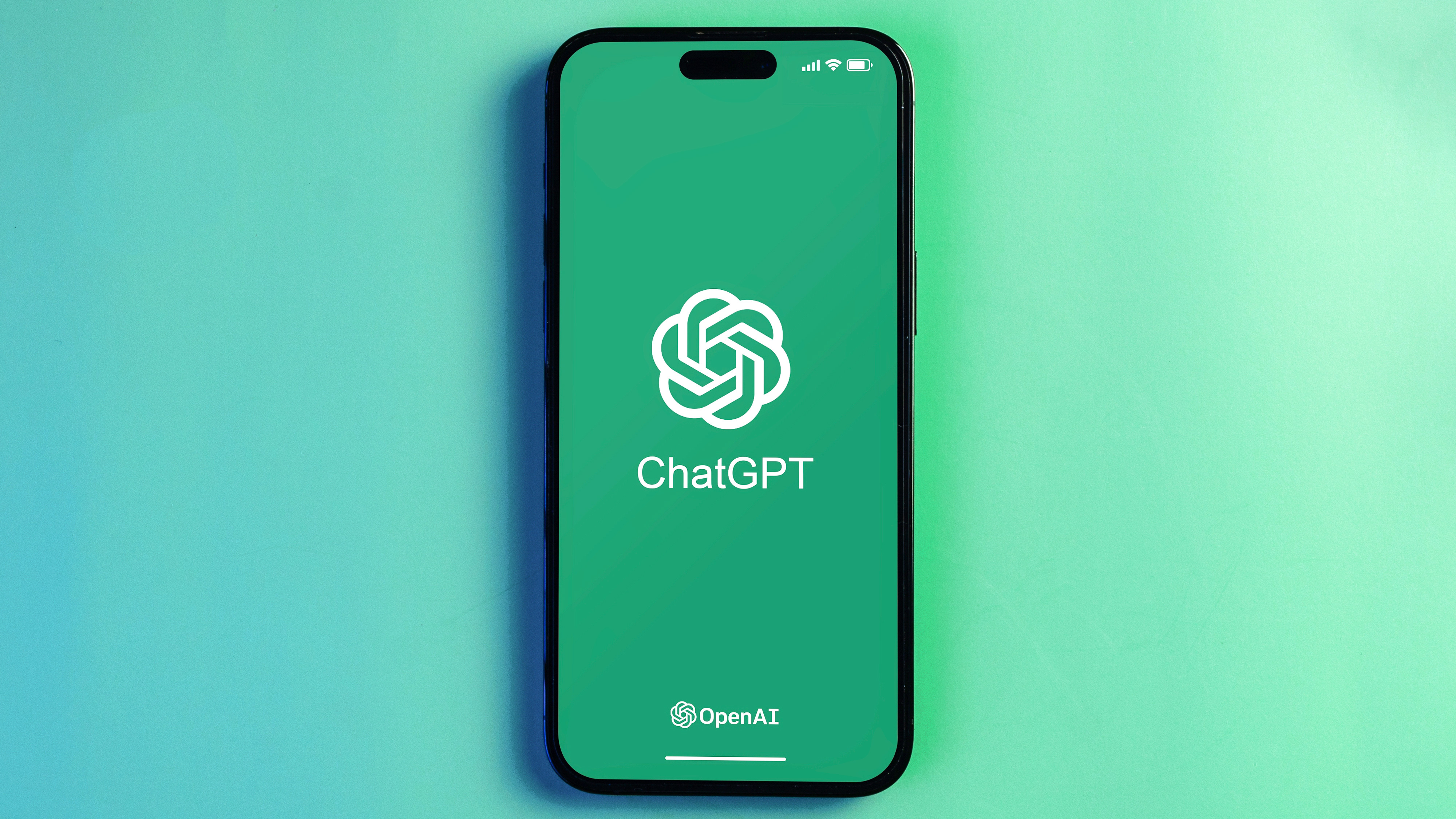Tom's Guide Verdict
The Hisense U9N is a large Mini-LED QLED TV that performs well with all content types and gets surprisingly bright. But its motion processing isn’t always flawless, and the lower-priced U8N is, in many ways, a better deal.
Pros
- +
Good brightness, color
- +
Google TV operating system
- +
Above-average sound
- +
Supports all HDR formats
Cons
- -
Relatively high input lag
- -
Only two HDMI 2.1 ports
- -
Upscaling, fast-motion processing could be sharper
Why you can trust Tom's Guide
Price: $2,999 ($2,499 on sale)
Screen size: 75 inches
Model: 75U9N
Resolution: 3,840x2,160
HDR: HDR10, HDR10+, HLG, Dolby Vision
Refresh rate: 144Hz
Ports: 2 HDMI 2.1, 2 HDMI 2.0, 2 USB
Audio: 82W
Smart TV software: Google TV
Size (without stand): 67.5x39.4x2 inches
Weight (without stand): 86.4 pounds
The Hisense U9N Mini-LED QLED TV is neither a budget set nor a budget-buster, yet it has characteristics of both. It starts at $2,499 for its 75-inch model (well below other flagship TVs’ prices) but has excellent brightness (more than 5,000 nits in some scenarios), color, and even sound, just as you’d expect from other top-performing models.
The U9N falters only as far as the depth of its picture processing, which is less advanced than you’ll see from LG, Samsung, or Sony, and it costs considerably more than the Hisense U8N.
But because of how well the U9N competes against more expensive TVs, and how good it looks in nearly every situation, it earns its place alongside the U8N as one of the best TVs you can buy.
Hisense U9N review: Pricing and availability
Hisense offers a range of TVs designed to match every viewing room and budget, even with its ULED line, which in this generation moves up from the U7N to the U8N to this one (with only the large, luxury UX models positioned above it). The U9N is available only in 75- and 85-inch sizes, and it has the premium prices to match:
- Hisense 75U9N: $2,999.99 | $2,499.99 (on sale)
- Hisense 85U9N: $3,999.99
You may purchase the U9N at either Amazon or Best Buy. We evaluated the smaller of the two models, though the performance should be similar on the 85-inch version. Not sure which one is right for your living room? Check out our handy ‘What size TV should I buy?’ page.
Hisense U9N review: Design and features
Whereas most TVs these days try to blend into their surroundings, the U9N is designed to stand out. It’s big to begin with, measuring 39.4x67.5x2 inches and weighing 86.4 pounds without the stand, and it has a thick (nearly one-quarter-inch), shiny bezel on all sides and silver speaker bars spanning the full left and right edges.


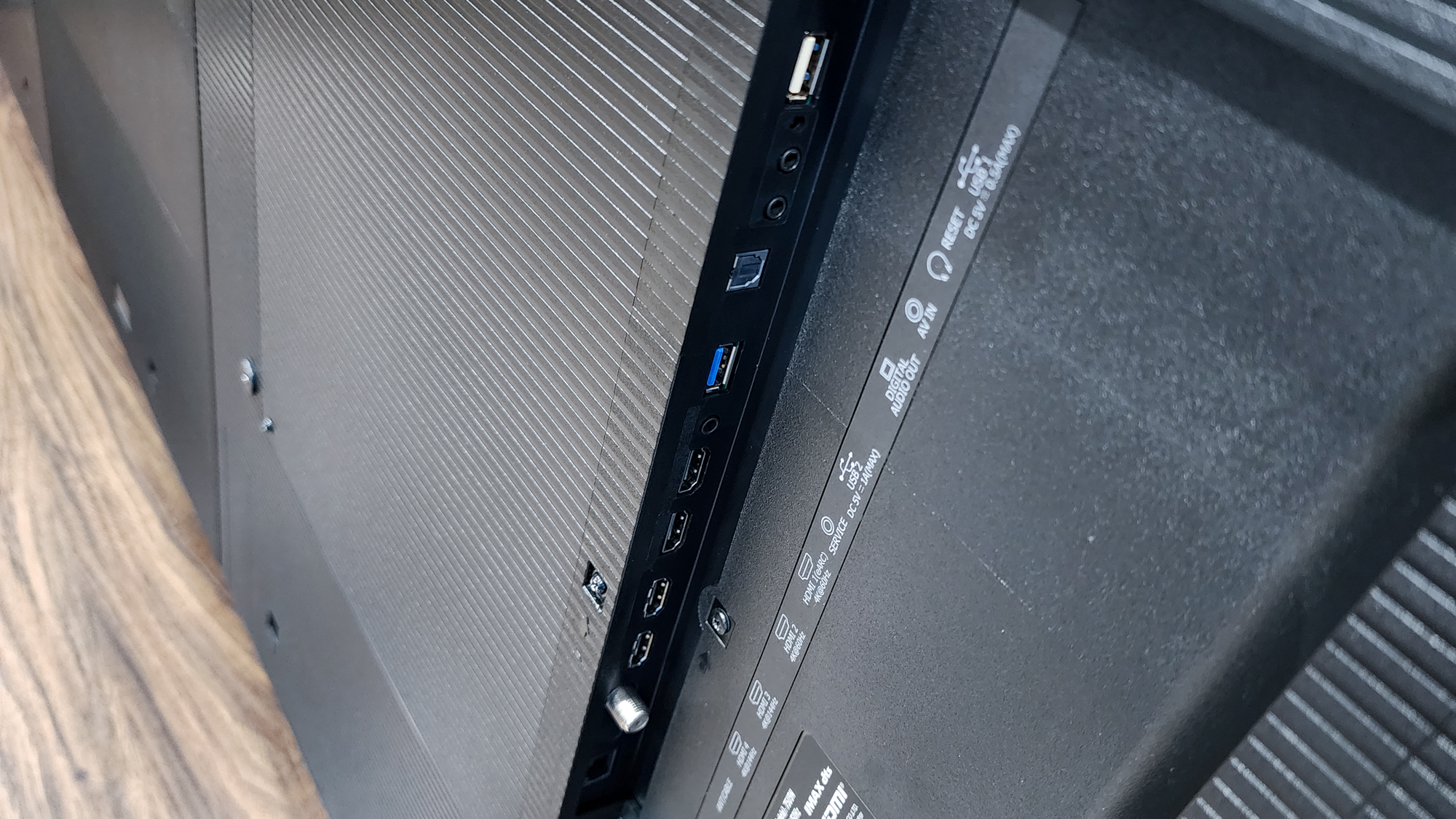

You can set it up on a wide entertainment center with its simple stand (two feet that connect to the lower-left and -right corners) or mount it on the wall using the VESA holes on the rear panel. The port collection is easily accessible, with all of them angled out the TV’s left edge. It comprises a coaxial cable connector; S/PDIF optical audio out; service; AV in; headphone; two USB; and four HDMI, with two HDMI 2.0 (60Hz) and two HDMI 2.1 (144Hz).
Get instant access to breaking news, the hottest reviews, great deals and helpful tips.
Hisense’s smart OS of choice remains Google TV, arguably the best combination of power and ease of use on the market thanks to its connection with Google’s search ecosystem. Unlike other high-end TVs to come out in 2024, the U9N is equipped with an ATSC 3.0 tuner for watching over-the-air 4K broadcasts. You can also stream from mobile devices via Chromecast, Apple AirPlay, and Miracast.
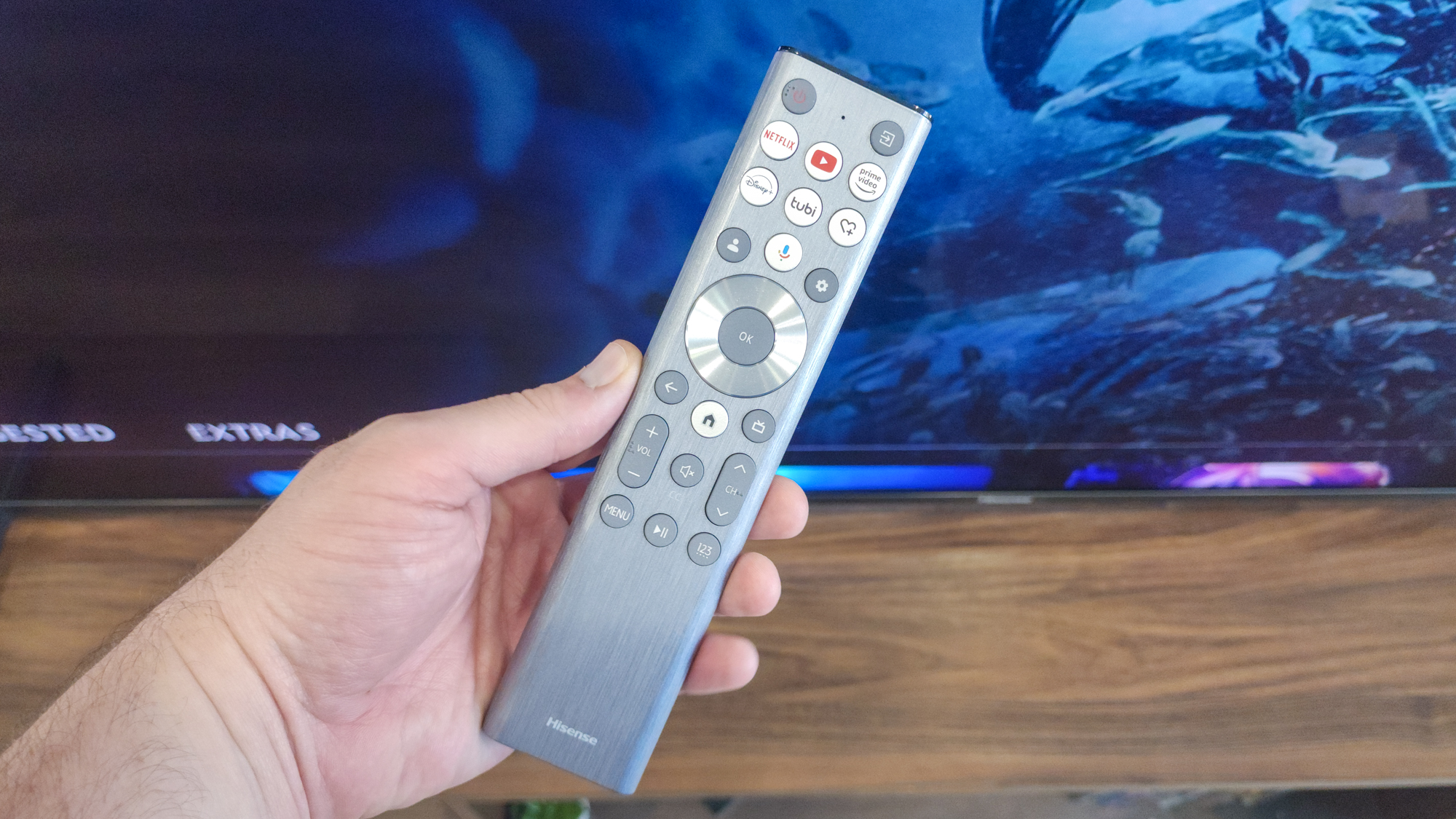
The U9N’s shiny gray remote is larger than we see with most TVs these days, but it has a wealth of well-organized controls, including a button to activate Google Assistant for voice searches (which you can also perform with the TV’s integrated far-field microphone). Most of its buttons are backlit, too, with the six shortcut keys (for Netflix, YouTube, Amazon Prime Video, Disney+, Tubi, and button customization) being the primary exceptions.
Hisense U9N review: Performance and test results
Until recently, TV buyers had to choose between OLED TVs, with astounding black and color levels but dim panels, and LED sets that were much brighter but lacking in the other areas. These days, however, the combination of quantum dots and Mini LEDs has made it possible to have both vibrant colors and intense black and white levels even on more traditional (and less-expensive) TVs. The U9N is proof of this, putting all these capabilities (plus thousands of local dimming zones) in service to create a TV that is a joy to watch.
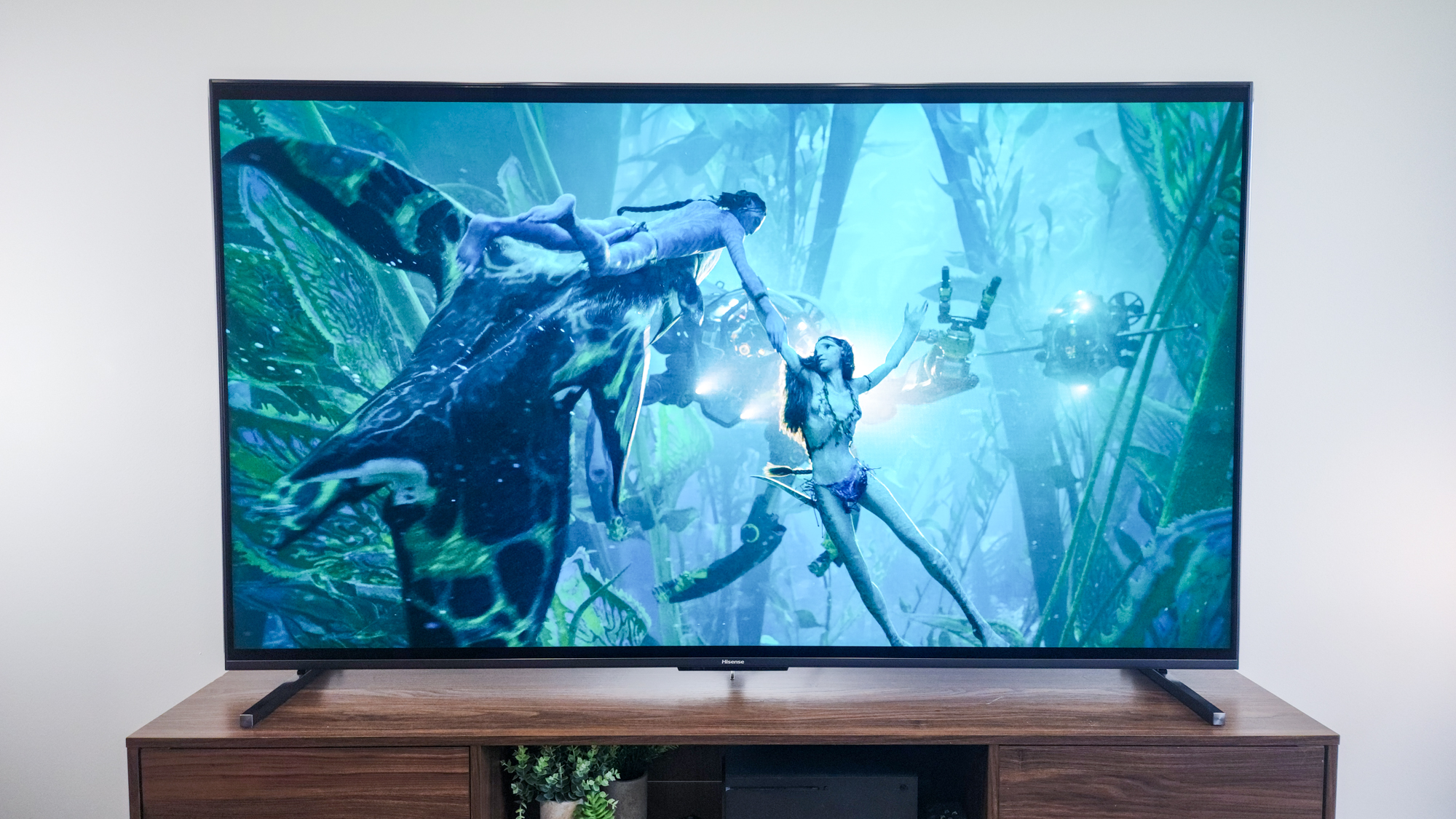
The movies and TV shows I sampled during the evaluation period were immensely satisfying visually, with gorgeous colors and gleaming whites routinely etched with luscious black. (The U9N supports all four major HDR formats.) This was most evident in more eye-popping films like Avatar: The Way of Water and color-drenched titles like The Super Mario Bros. Movie or Spider-Man: Across the Spider-Verse. But even Dune: Part Two and Oppenheimer, where shadows are far more important characteristics of the storytelling, looked terrific, if not quite as arresting as on an OLED (such as the similarly priced LG C4 OLED).
Not everything plays perfectly, though. The U9N lacks some of the processing chops of TVs like the Sony Bravia 9 ($3,500) or the Samsung QN90D ($2,200), and this manifests in poorer, flatter upscaling and chunkier fast motion in frantic action scenes. These are acceptable compromises when you’re paying less, but they may not appeal to you if you want the best performance you can get.
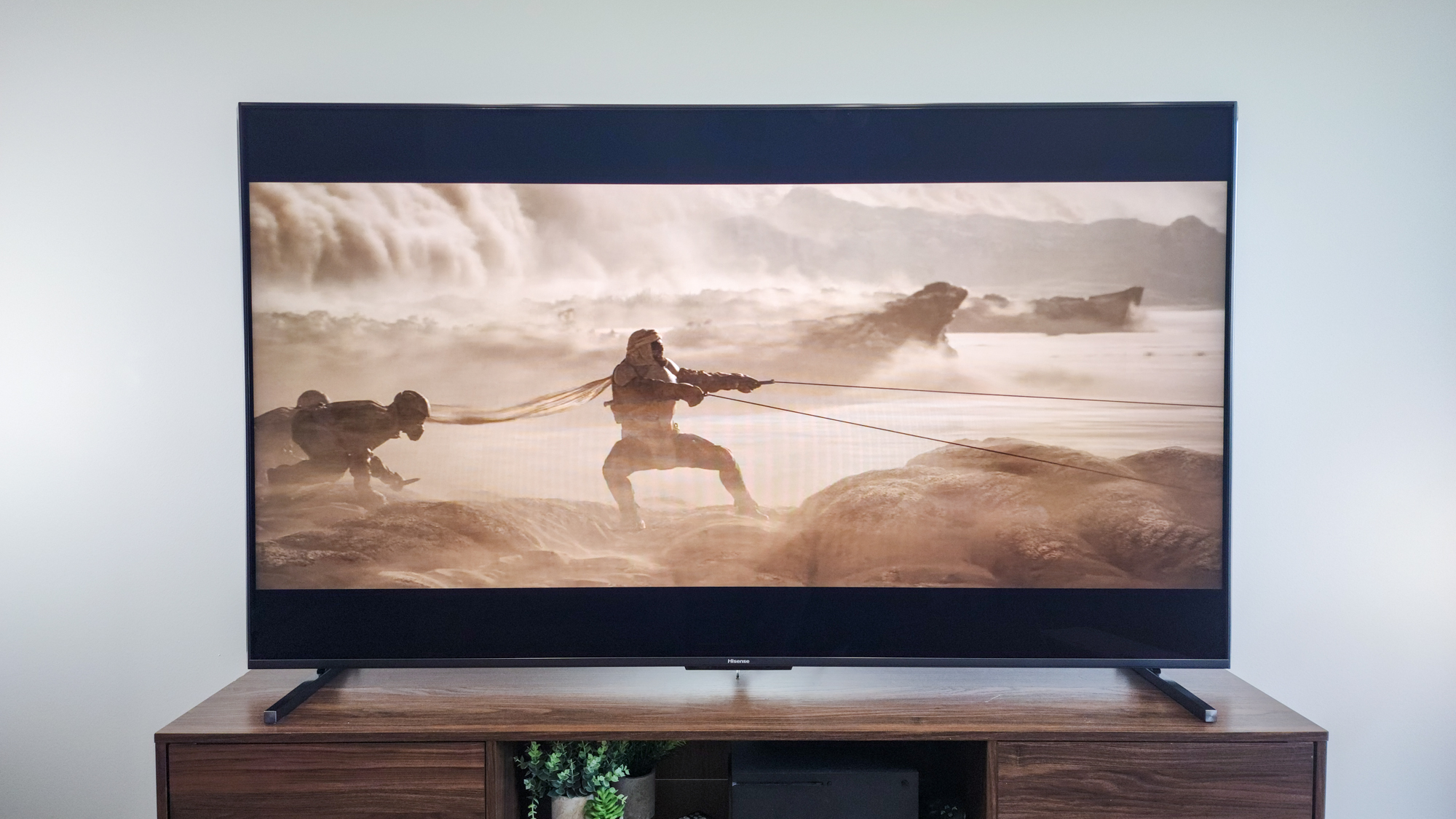
Hisense advertises 5,000 nits of peak brightness for the U9N, though you shouldn’t expect to see that all the time. We conduct our brightness tests in a 10% window. (We conduct our technical tests with a Jeti spectraval 1501 spectroradiometer, a Klein K10-A colorimeter, a Murideo 8K-SIX-6 Metal pattern generator, and Portrait Displays’ Calman calibration software. Read more about how we test TVs.) In Filmmaker Mode (typically a TV’s most accurate mode), we measured 1,527 nits with SDR content, though we could get considerably brighter in both Standard (3,460) and Vivid (4,644). With HDR factored in, even Filmmaker Mode could get up to 3,841 nits. We saw 5,000 nits, and in some cases higher, only on smaller portions of the screen.
These numbers are considerably higher than you’ll see on OLED sets, of course, and even the QN90D (1,986 nits) and the Bravia 9 (2,713 nits), can’t compare. But because the human eye perceives brightness logarithmically, the higher brightness may not be a deal-breaker. The lower brightness of OLED sets and Sony’s best picture mode (Professional) also confer additional viewing benefits, particularly in dark rooms; with the U9N, you’ll always get the best picture in a brighter room. And though the U8N doesn’t get as bright, either, our HDR measurement of 3,296 nits with HDR is closer than you might expect.
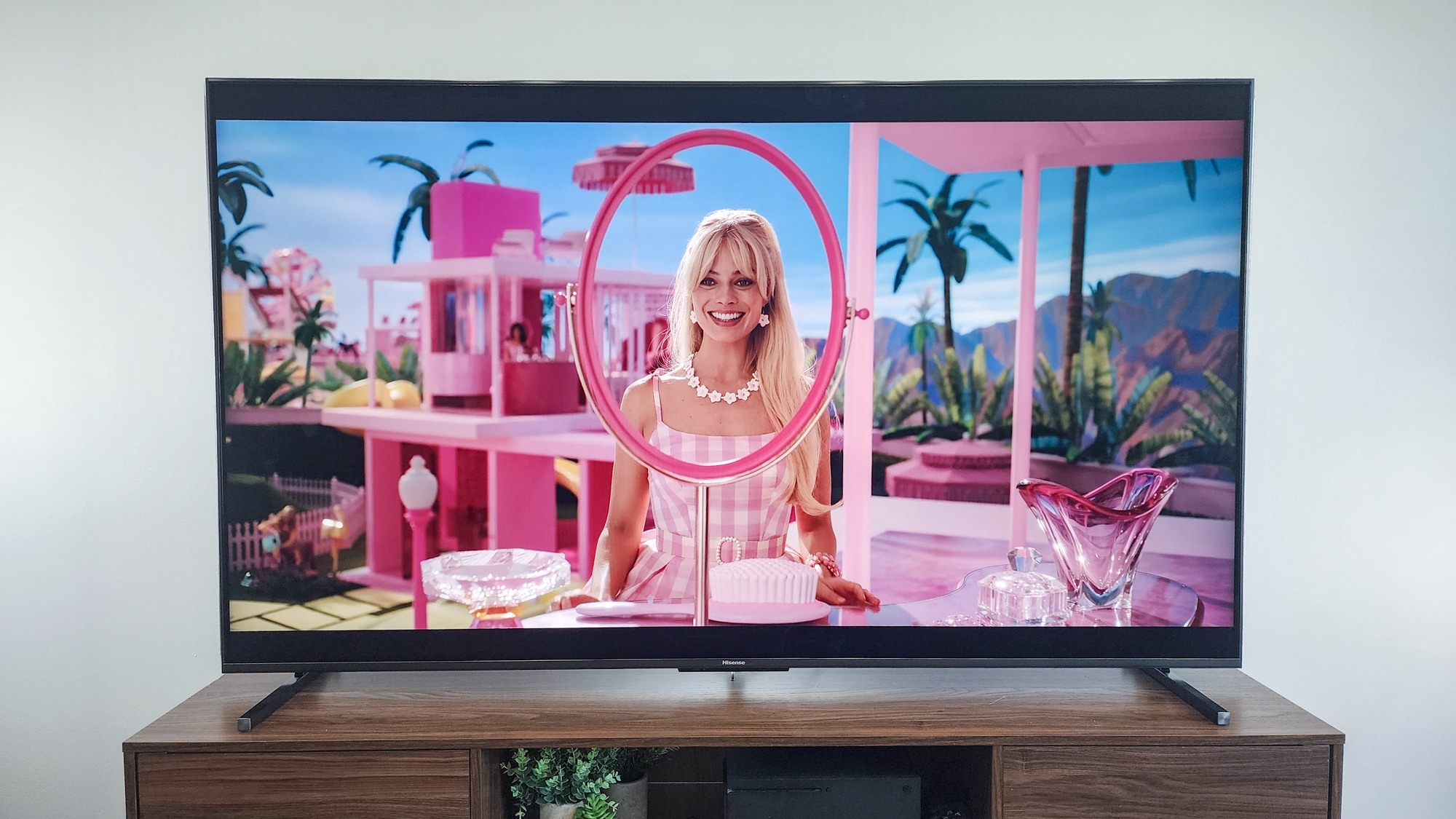
Color performance on the U9N is impressive, too. Its Delta-E (which measures the difference in color between what’s produced at the source and what’s displayed on the screen, with lower numbers being better) was around 2.2, a fine result (if a tick above the Bravia 9), and it covered 99.4% of the Rec. 709 (SDR) color gamut. As far as HDR, the U9N’s 99.08% coverage of the UHDA-P3 color gamut and 82.68% coverage of the even wider Rec. 2020 are some of the best results we’ve seen from any TV.
With an unusually robust 82W 4.1.2 Dolby Atmos speaker system, the U9N sounds good across the board. It has no trouble filling a room with sound, and produces only slight traces of distortion at extremely high volume. You might garner some additional clarity by pairing it with one of the best soundbars, but only the hardest-core audiophiles are likely to find this necessary.
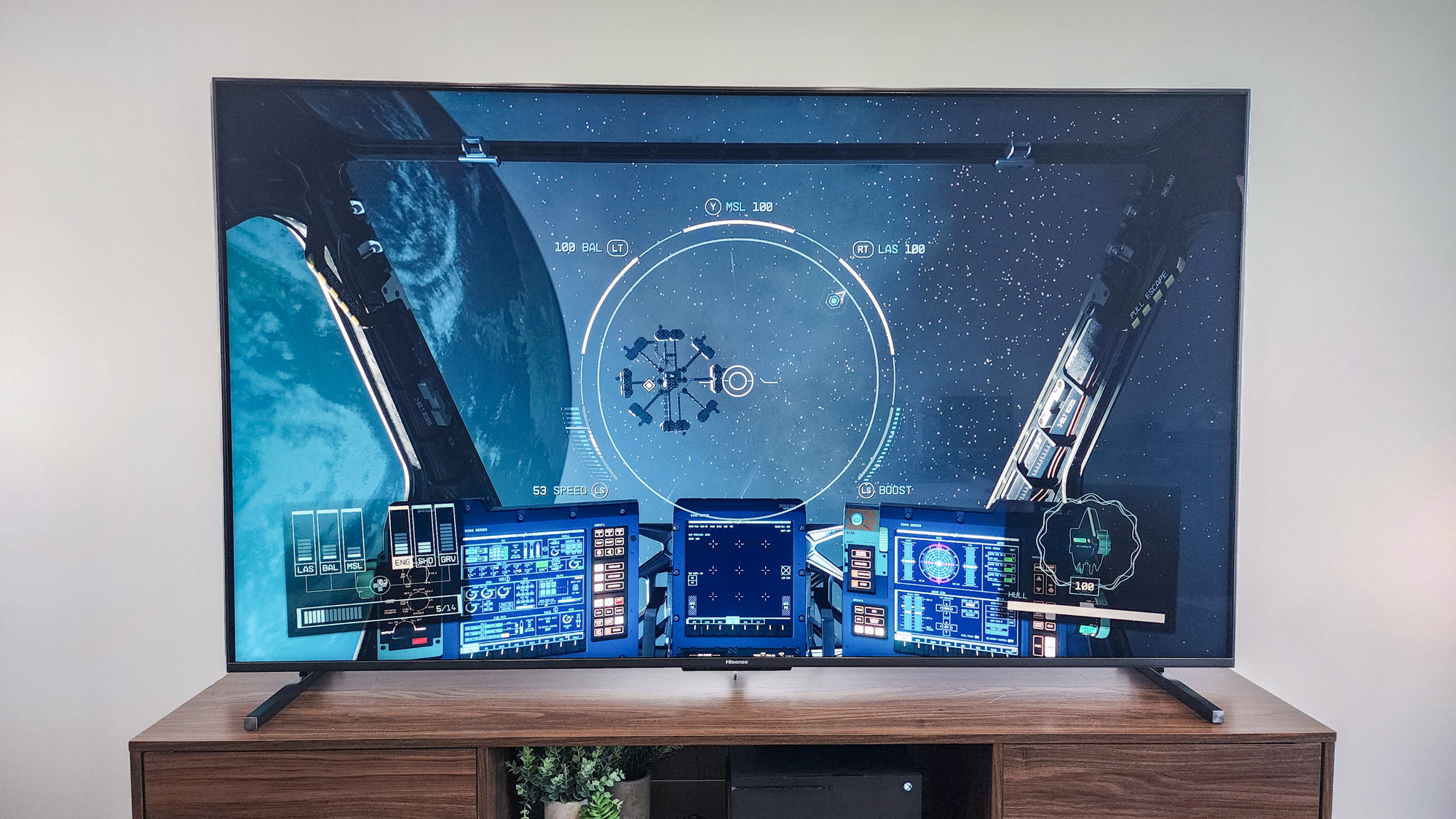
There is no shortage of gaming features, with a 144Hz refresh rate (through the HDMI 2.1 ports, which also allow for Variable Refresh Rate) and support for AMD FreeSync Premium Pro and Dolby Vision Gaming. The Hisense Game Bar also puts a lot of additional settings and functionality right at your fingertips, without forcing you to leave the screen to get them. The U9N’s biggest gaming misstep in our testing was input lag: We measured it at 15ms, which is okay, but falls well short of our 10ms threshold for the smoothest playing experience.
Hisense U9N review: Verdict
Higher-end manufacturers had better watch out — Hisense has come on stronger than ever this year, making the case that you don’t need to spend luxury dollars to get a luxury TV. The U8N, U7N, and U6N represent some of the best value options on the market, and that’s tough to argue with, especially when companies like LG, Samsung, and Sony are putting out some of their best new products, too (if at higher prices).
The U9N competes well against them on most fronts, which is quite an accomplishment. What this TV lacks in premium fit and finish, it makes up in many other areas, provided you can live without an ultra-crisp picture in upscaled or fast-motion content and have somewhere to put (or, in a smaller room, the patience to put up with) a 75- or 85-inch TV, as there are no other side choices. But for everyday, bright-room viewing, the U9N is tough to beat.
The U8N lags behind the U9N less than you might suspect, and because comparable sizes of the U8N can be found for as much as $1,000 less, it’s likely to be the more compelling choice for most people. Those minor picture issues and fewer HDMI 2.1 ports become easier to forgive as you pay less, after all.
If you have your heart set on a big-screen premium TV, though, the Hisense U9N will get you where you want to go without making you feel like you’re sacrificing much to get there.
Matthew Murray is the head of testing for Future, coordinating and conducting product testing at Tom’s Guide and other Future publications. He has previously covered technology and performance arts for multiple publications, edited numerous books, and worked as a theatre critic for more than 16 years.
